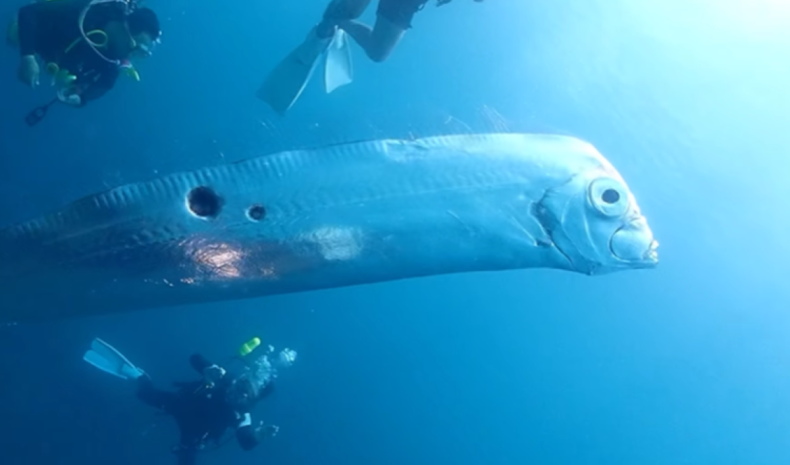A group of divers had a remarkable encounter with a rare giant oarfish off the coast of Taiwan, capturing the extraordinary moment in a viral video. The footage, shared by diving instructor Wang Cheng-Ru in June, showcases the deep-sea fish in shallow waters near the Ruifang District on Taiwan’s northeast corner.
Giant oarfish sightings are a rarity, as they typically reside at depths ranging from 200 to 1,000 feet below the surface. The silvery gleam on their body is often associated with legends as a sign of impending disasters. However, the video suggests that the oarfish encountered by the group appeared to be wounded.
Cheng-Ru shared his excitement about the encounter, stating, “Many amazing animals can be found off Taiwan’s northeast coast…but it was my first encounter with a giant oarfish.”
What is a Giant Oarfish?
The giant oarfish is a deep-sea dweller that usually inhabits depths of around 700 feet, but it has been found as deep as 3,280 feet. These scaleless creatures with silvery guanine-covered bodies can be found in non-Arctic waters around the globe. They hold the distinction of being the longest bony fish, according to Guinness World Records. Notably, a specimen measuring about 50 feet was caught off New Jersey in 1963, and a massive 600-pound oarfish was captured in Maine in 1885. Scientifically known as Regalecus glesne, the oarfish’s name is derived from its highly compressed and elongated body.
Are Oarfish Dangerous?
Despite the rarity of live oarfish sightings, there is little danger posed by these fascinating creatures. Oarfish lack teeth and primarily feed on plankton through gill rakers. Although the fish may have inspired tales of sea monsters, there are no reports of encounters with oarfish leading to any harm.
Oarfish in Mythology
In Japanese folklore, oarfish sightings are considered omens of impending disasters. Referred to as “ryugu no tsukai” or “Messenger from the Sea God’s Palace,” oarfish were believed to be the servants of the sea god Ryūjin. According to legend, these fish were sent to the surface to warn people of approaching earthquakes. While there were sightings of oarfish before the 2011 Tohoku earthquake and Fukushima nuclear disaster, scientists regard the connection as spurious. Hiroyuki Motomura, a professor of ichthyology at Kagoshima University, dismissed any cause for concern, stating, “There is no scientific evidence of a connection, so I don’t think people need to worry. I believe these fish tend to rise to the surface when their physical condition is poor, rising on water currents, which is why they are so often found dead.”
Source : USA Today
Read More :
U.S. Women’s National Soccer Team Starts Women’s World Cup Campaign with a 3-0 Victory over Vietnam
Hungarian Grand Prix Secures Formula One Spot Until 2032 with Contract Extension





